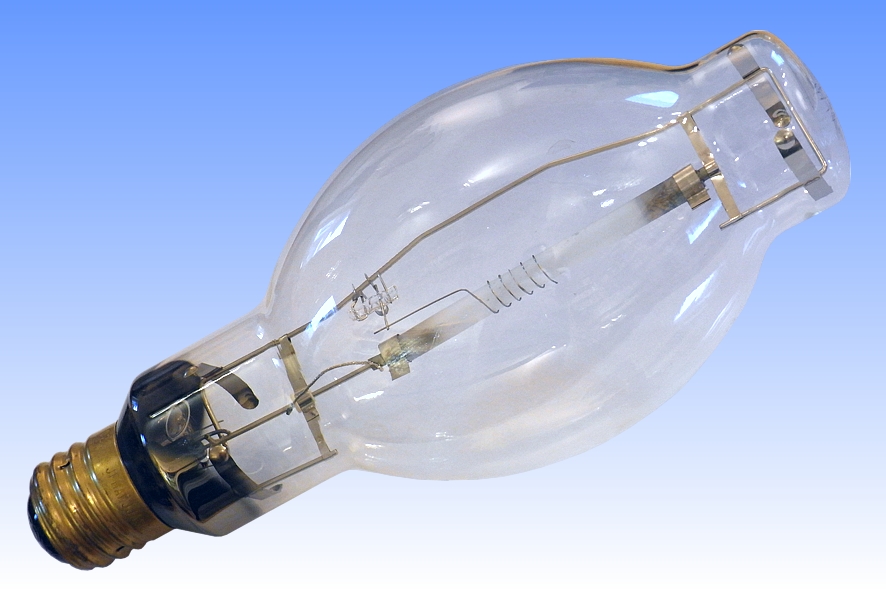
|
Sylvania Unalux Penning-Start Mercury Retrofit |

This requires an increased lamp current for each wattage rating, hence the need for different ballasts. Coupled with the fact that the xenon gas filling requires a high voltage pulse to strike the arc, the first HPS lamps were electrically excluded from the millions of sockets for mercury lamps.
In 1973 Sylvania invented this so-called Penning-Start lamp to make a simple retrofit possible. The gas is changed to a neon-argon Penning mixture, combined with a third auxiliary electrode coiled around the arc tube to allow breakdown at ordinary open circuit voltages. A bi-metal switch disconnects the coil when the lamp is hot to minimise sodium loss during life. The amalgam ratio is also adjusted to suit the higher voltage for a mercury ballast. Efficacy is about 15% less than ordinary lamps because thermal losses are higher with Ne:Ar than Xe fills, and life is also reduced due to the higher initial voltage. However a 10% energy saving and 75% increase in luminous flux is still possible vs mercury lamps.




| Manufacturer: | GTE Sylvania | |
| Lamp Power: | 360 Watts | |
| Lamp Current: | 3.3 Amps | |
| Lamp Voltage: | 125 Volts | |
| Cap Type: | E39s | Brass + vitrite |
| Bulb Type: | BT-116 | BT-37 in eighths/inch |
| Bulb Finish: | Clear | Leaded Borosilicate |
| Electrodes: | Backwound tungsten | BCT emitter |
| Arc Length: | 86.9 mm | 3.42 inches |
| Atmosphere: | NaHg | 98.5% Ne, 1.5% Ar | Outer: Hard vacuum |
| Luminous Flux: | 38,000 lm @ 100h | 34,960 lm average |
| Luminous Efficacy: | 105.7 lm/W @ 100h | 97.1 lm/W average |
| Colour Temperature & CRI: | CCT: 2060K | CRI: |
| Chromaticity Co-ordinates: | CCx: 0.516 | CCy: 0.408 |
| Rated Lifetime: | 16,000 hours | 50% suvival & 80% flux |
| Warm-up & Re-strike time: | 4 minutes | 3 minutes |
| Burning Position: | Universal | |
| Overall Length: | 292.1mm | 111/2 inches |
| Light Centre Length: | 177.8mm | 7 inches |
| Factory: | Manchester, NH | U.S.A. |
| Date of Manufacture: | November 1982 | Date Code 023 |
| Original / Present Value: | ||

